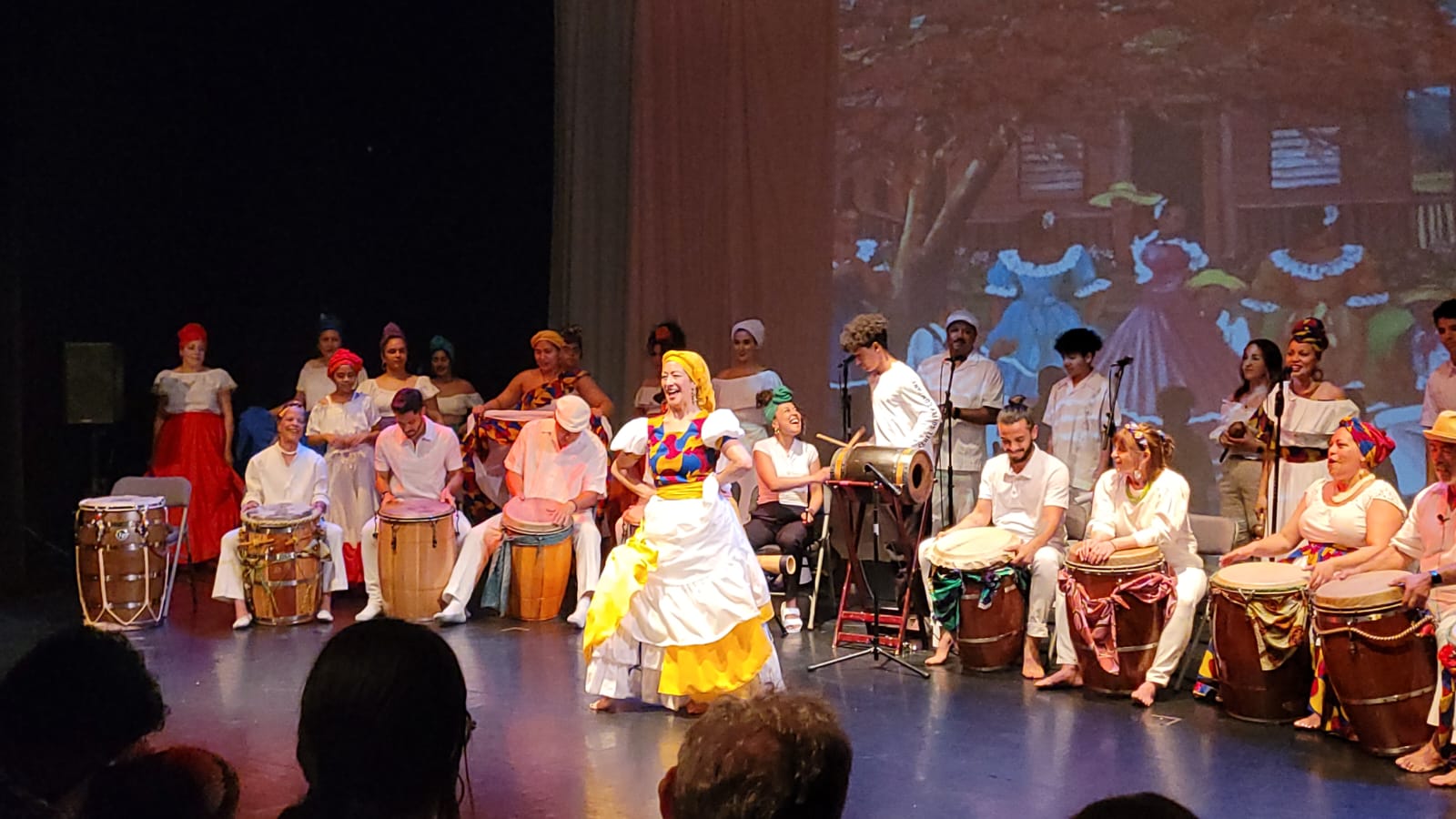By Blair Black
Blair Black is a 2023 Archiving and Preservation Fellow with JazzAntiqua. Read more about the Fellowships here. This is the third part of Blair’s blog; read the second part here.
The Small-Sized Archives’ CMS Dilemma: Airtable Vs Archivists’ Toolkit
Small-sized archives, such as the newly minted JazzAntiqua archive, are often constrained by limited resources and staff face unique challenges in managing their valuable collections. Traditional cataloging and archival management systems can be expensive and complex, making them less accessible. Among the many available tools to manage archival material, I will discuss Airtable and Archivists’ Toolkit (AT) as case studies because they provide good case studies of pros, cons, and use scenarios. In this post, I will compare these two platforms, exploring their features, advantages, and limitations in the context of archival collection management. Additionally, this blog post will explore how I utilized Airtable to streamline JazzAntiqua’s collection management processes and enhance its accessibility to the dance company’s staff.
Airtable, a versatile and user-friendly project management platform often utilized as a database, offers a cost-effective and efficient solution for small-sized archives to manage their collections until more traditional catalog management systems can be utilized. Acquiring and maintaining complex archival software can be financially burdensome, and hiring dedicated IT personnel may not be feasible. Airtable’s user-friendly interface allows archivists with varying levels of technical expertise to create and manage databases efficiently, ensuring that collections are accessible and discoverable to both staff and potential users. Its spreadsheet-like grid view is intuitive and easy to navigate, making it approachable even to those with limited software experience. Archivists can create fields for essential metadata such as title, creator, date, and description, ensuring that their catalog meets archival standards. Airtable supports multimedia, allowing archives to upload images, documents, and audio files directly into records. This feature is particularly valuable for digitizing and preserving physical materials, making them accessible in digital formats.

JazzAntiqua Dance & Music Ensemble Performing “1960 What?” 25th Anniversary Concert (2018). Nate Holden Performing Arts Center. Pictured: Shari Washington Rhone, Justin Edmonson. Photographer: George Simian. Courtesy of JazzAntiqua.
The Archivists’ Toolkit (AT), developed specifically for archival institutions, is a free, open-source software application designed to assist archivists in managing collections efficiently. It has gained widespread recognition for its robust functionality and adaptability to the unique needs of archivists. This software manages the entire lifecycle of archival materials. Users can create detailed records for collections, series, and individual items, allowing for precise control and tracking of materials. This feature is particularly valuable for maintaining the integrity and provenance of archival collections. AT was developed by archivists and librarians at the University of California, San Diego, and the New York University Libraries. It offers a comprehensive suite of tools and features tailored to archival best practices, thus making it a favored choice among established archival institutions.
Project Management & User Analytics
Small-sized and junior archives may still need to hire a seasoned archivist to manage their collections. However, Airtable allows staff to collaborate seamlessly with team members or volunteers on cataloging and metadata entry. Because of its primary purpose as a workflow management system, Airtable is highly customizable in that you can create separate bases for different projects and use a variety of views to visualize your project’s timeline and progress. Airtable allows you to assign tasks to team members, set deadlines, and monitor progress. Thus, multiple users can access and edit records simultaneously, facilitating efficient teamwork and knowledge sharing. Since many funding agencies ask applicants to track volunteer hours, Airtable can also integrate with time-tracking tools to monitor how much time is spent on various tasks, helping evaluate project progress and allocate resources more effectively.
On the other hand, Archivists’ Toolkit provides collaboration capabilities with multi-user access, which is crucial for archival institutions where teamwork is essential for managing large collections. It also maintains detailed user access controls, ensuring data integrity. AT also offers a range of reporting and analytics tools that allow archivists to generate customizable reports on collection statistics, inventory status, and accessions. These reports are invaluable for decision-making, grant applications, and assessing the overall health of archival holdings.
Interoperability & Implementing Airtable for Collection Management
Without a more traditional CMS such as Archivists Toolkit where administrative metadata, arrangement, accessioning documentation, etc. is built into the software, I utilized Google Sheets to inventory, arrange, and describe the materials within JazzAntiqua’s sub-collections and keep record of collection documentation such as accession records. A feature AirTable advertises is their interoperability, or ability to work with, the Google Office Suite. This means that the users can implement industry standard fields in each column of the google sheet through the data validation tool, such as format, unique ID, location, description, etc. using tools that are readily available. For instance, I replicated most of the fields found in Archivist Toolkit into the columns on the collection Google Sheet and then uploaded that file to AirTable. In doing so, I use AirTable as a database which will hold a created collection file that is stored on Airtable. This process involves creating a new base in Airtable and importing existing spreadsheets or data files. Since most of my archival training is based on the University of California, I set up this base to mirror the the University of California’s Special Collections Records & Encoded Archival Description interface (SCREAD) system for JazzAntiqua’s staff. However, I noted to staff that they should regularly ensure that any imported data is correctly mapped to the new database structure.
AT offers a structured data model designed around archival principles and standards. While this structure aligns well with established archival practices, it may be less accommodating for institutions with non-traditional collections or workflows. AT was specifically developed to align with archival standards such as Encoded Archival Description (EAD) and Dublin Core. This built-in adherence to best practices ensures consistency and interoperability, which are critical in archival management.

JazzAntiqua Dance & Music Ensemble Performing “A Kind of Blue.” Jacob’s Pillow Dance Festival (2022). Pictured: Chris Smith, Tashara Gavin-Moorehead, Bernard Brown, Justin Edmonson, Keisha Clark-Booth. Photographer: Christopher Duggan. Courtesy of Jacob’s Pillow
Use Cases and Considerations for Airtable & Archivists’ Toolkit
Airtable is suitable for smaller archives or organizations with limited resources that prioritize flexibility and ease of use. It can be a viable option for community archives with non-standard collections, such as dance archives like JazzAntiqua. Unlike the more conventional archives that primarily house documents and tangible artifacts, dance archives preserve the ephemeral and kinetic art form of dance. For example, JazzAntiqua’s emerging collections contain the movements, choreography, costumes, music, performance, and cultural context surrounding jazz as a generative Black creative vernacular, making them unique repositories of embodied history. With an emphasis on videos, photographs, audio recordings, and oral histories, dance archives break away from the traditional paper-based archival model, relying instead on multimedia formats to document the creative expression and cultural significance of dance. AirTable is flexible in implementing the fields to adapt to these different catalog management systems. However, the downside to adapting a multifaceted management system is the increased likelihood of not adhering to standardized archival best practices and manual creations of EAD and MARC21 reports.
Conclusion
Both Airtable and the Archivists’ Toolkit offer unique advantages and are well-suited to different archival contexts. Airtable excels in its user-friendly interface, flexibility, and collaboration features, making it accessible to smaller archives and organizations. However, it lacks built-in adherence to archival standards and may require additional effort to align with established practices. On the other hand, the Archivists’ Toolkit is purpose-built for archival management, offering robust support for archival standards, accessioning, hierarchical description, and EAD export. It is the preferred choice for established archival institutions with dedicated archivists and a strong emphasis on adherence to best practices. Ultimately, the choice between Airtable and the Archivists’ Toolkit should be guided by the specific needs, resources, and priorities of the archival institution. Whether opting for flexibility and ease of use or a comprehensive archival tool aligned with industry standards, both platforms contribute to the vital mission of preserving our cultural heritage for future generations.
Cited
Society of California Archivists. 2020. “ArchivesSpace and Airtable for Improved Workflow
Management.” Youtube. 2 July. retrieved from
https://www.youtube.com/watch?v=3mODz4y-WPI&ab_channel=SocietyofCaliforniaArchivists
“Archivists’ Toolkit and ArchivesSpace.” Historical Society of Pennsylvania. Retrieved
from
https://hsp.org/archivists-toolkit-and-archivesspace#:~:text=Archivists’%20Toolkit%20offers%
Header photo: JazzAntiqua Dance & Music Ensemble performing “Freedom! Jazz! Dance!” 25th Anniversary Concert (2018) at the Nate Holden Performing Arts Center. Pictured: Paul Livingstone (bass), Albertossy Espinoza, Sarah Platte, Autumn Randolph, Justin Edmonson. Photographer: George Simian. Courtesy of JazzAntiqua.
 A Los Angeles native, Blair Black (she/her) is a doctoral candidate in UCLA’s Ethnomusicology department. Her work focuses on the representational politics of underrepresented communities within electronic dance music and club cultures. Her dissertation studies the aesthetic developments and discursive strategies people of color and queer communities employ in navigating (in)formal EDM industries. A recipient of the University of California’s Dissertation Year & Eugene V. Cota-Robles Fellowships, Blair has worked with projects such as the Center for the Study of Women’s Chemical Entanglements Oral History Project, the Center for Oral History Research’s Black LGBTQ in Los Angeles Oral History Project & UCLA Herb Alpert School of Music Library’s forthcoming My Life in the Sunshine: Sampling the Soundscape of Black Los Angeles Exhibit. An aspiring archivist, she’s worked closely with Southern California repositories (UCLA’s Ethnomusicology Archive & The ONE Archives at USC) and hopes to continue processing collections of underdocumented communities with JazzAntiqua. Photo courtesy of Blair Black.
A Los Angeles native, Blair Black (she/her) is a doctoral candidate in UCLA’s Ethnomusicology department. Her work focuses on the representational politics of underrepresented communities within electronic dance music and club cultures. Her dissertation studies the aesthetic developments and discursive strategies people of color and queer communities employ in navigating (in)formal EDM industries. A recipient of the University of California’s Dissertation Year & Eugene V. Cota-Robles Fellowships, Blair has worked with projects such as the Center for the Study of Women’s Chemical Entanglements Oral History Project, the Center for Oral History Research’s Black LGBTQ in Los Angeles Oral History Project & UCLA Herb Alpert School of Music Library’s forthcoming My Life in the Sunshine: Sampling the Soundscape of Black Los Angeles Exhibit. An aspiring archivist, she’s worked closely with Southern California repositories (UCLA’s Ethnomusicology Archive & The ONE Archives at USC) and hopes to continue processing collections of underdocumented communities with JazzAntiqua. Photo courtesy of Blair Black.
____
We accept submissions on topics relevant to the field: advocacy, artistic issues, arts policy, community building, development, employment, engagement, touring, and other topics that deal with the business of dance. We cannot publish criticism, single-company season announcements, and single-company or single artist profiles. Additionally, we welcome feedback on articles. If you have a topic that you would like to see addressed or feedback, please contact communications@danceusa.org.
Disclaimer: Opinions expressed in guest posts do not necessarily represent the viewpoints of Dance/USA.





